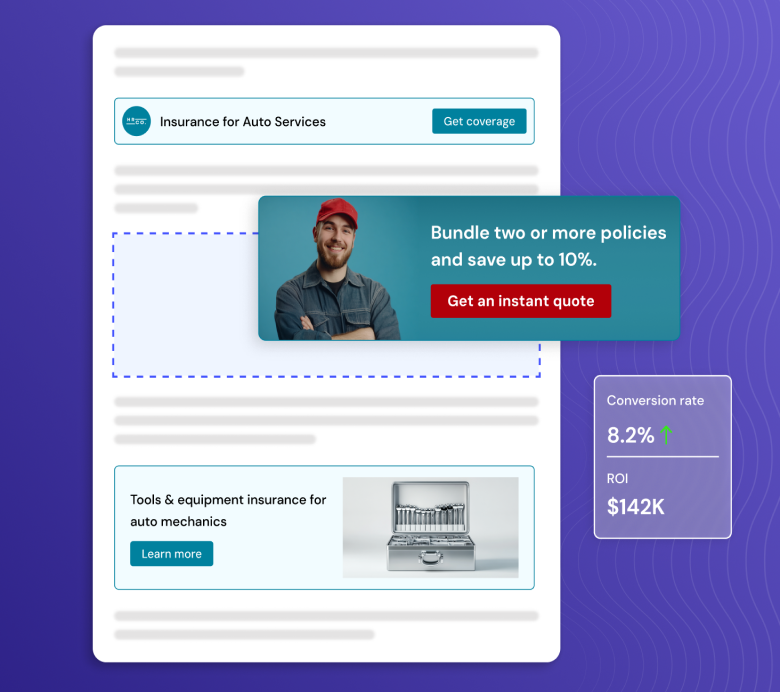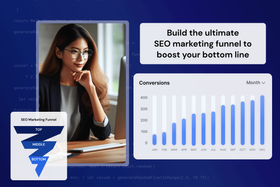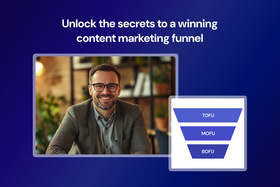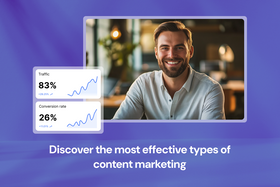7 top-of-the-funnel marketing tips for killer content
Discover proven tips for creating top-of-funnel content that builds awareness and guides users through the funnel.
Updated March 5, 2025
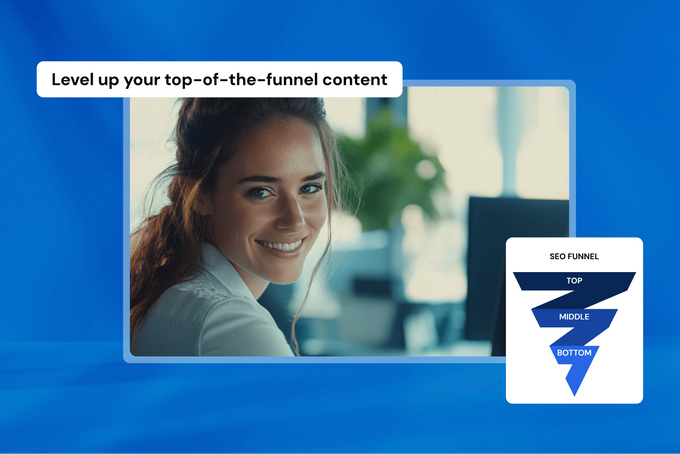
Creating content that attracts and engages prospects at the start of their journey requires a strategic approach. Top-of-funnel marketing focuses on capturing attention and building awareness when potential customers are just starting to explore solutions to their problems—they're curious and information-hungry, but not ready to buy.
While this content might seem straightforward to create, small tweaks in your approach can dramatically impact its performance.
Key takeaways
- The goal at the top of the funnel is increasing brand awareness and helping users move to the next stage in their journey.
- At the top of the funnel, users need engaging informational content that answers their questions.
- Always target search intent to ensure your content meets user needs—no matter the funnel stage.
- Use highly relevant CTAs and internal links to guide users through your content funnel toward conversion.
What is top-of-the-funnel marketing?
Top-of-the-funnel marketing targets users in the awareness stage. Unlike bottom-of-the-funnel marketing, where the goal is conversion, top-of-the-funnel marketing focuses on building brand awareness, increasing traffic, and sending it to the next marketing funnel stage.
Top-of-the-funnel marketing uses various channels to reach these goals, including:
- SEO: Creating high-quality, informative content optimized for search engines to attract organic traffic.
- Paid advertising: Running ads on platforms like Google, Facebook, and LinkedIn to reach new audiences.
- Social media marketing: Sharing engaging and valuable content on social platforms in different formats to increase visibility and interest.
- Email marketing: Offering resources like newsletters or downloadable content to build a connection with a potential audience.
» Get to know the entire content marketing funnel.
7 essential top-of-funnel content marketing tips
1. Create high-quality informational content
When users land on your content, they're usually looking for information or trying to solve a problem, not shopping for a solution. Your job is to be a helpful expert who provides actionable advice and breaks down complex topics without pushing your product into every paragraph. Think about the questions that keep your target audience up at night—those "How do I..." and "What's the best way to..." top-of-the-funnel queries that make up the majority of searches.
The trick is finding that sweet spot between high-volume topics that bring in traffic and specific insights that actually help your audience and guide them to the next stage of their journey. This approach not only attracts more qualified traffic but also helps you build topical authority.
» Learn the key steps of content editing to create better content.
2. Choose the right content types
Try matching content format to user needs by delivering information in the most digestible way possible. Sure, blog posts are great for deep dives into technical topics, but sometimes a two-minute video can explain a concept better than a 2,000-word article—in fact, 73% of users prefer learning through short videos over text-based articles.
The key is understanding when to use what:
- Blog posts: Perfect for in-depth explanations and ranking for important informational keywords.
- Videos: Ideal for showing rather than telling—especially for technical processes.
- Infographics: Your best option for turning complex data or multi-step processes into a format that's easy to skim and understand.
- Interactive content (e.g., quizzes and calculators): Great for engaging users who prefer to learn by doing.
» Learn how to conduct a content audit to boost SEO.
3. Target search intent
Targeting search intent is essential for effective top-of-the-funnel marketing. You need to understand what your target audience is searching for and how you can offer a relevant solution. Search intent, or the goal behind a user’s search query, can be broken into four main types:
- Navigational: Users search for a specific site, like "YouTube" or "eBay."
- Informational: Users looking for information or an answer to a query, such as "how to train a dog" or "what causes insomnia."
- Commercial: Users research products or services with queries like "best electric cars" or "best running shoes."
- Transactional: Users are ready to complete a transaction and use queries like "buy headphones" or "download running app."
By targeting your audience's search intent, you can create relevant, high-ranking content that meets users’ needs right from the start.
4. Implement strong visuals
Think of visuals as your content's tour guide, not just pretty decorations. They should lead readers through complex ideas, break up walls of text, and actually add value to your explanations. Random stock photos aren't going to cut it. Your visuals need to work as hard as your words do.
You can add the following visuals to your content:
- Strategic screenshots: Visually demonstrate your points and give users concrete examples they can easily apply to themselves.
- Custom graphics: Use custom graphics like flowcharts to simplify complex processes.
- Data visualizations: Make statistics more digestible so that users can see important insights at a glance.
- Videos: Demonstrate more technical or practical concepts in a way that allows users to follow along.
» Learn how to create social media videos for your brand.
5. Focus on building trust
Let's face it—most content out there reads like it was written by AI. If you want to stand out, share real insights that make your readers think, "Finally, someone who gets it." Research shows that 88% of consumers believe trust is a crucial factor when choosing a brand. And in order to build trust, you need to prove you have real experience and expertise.
The trick is sharing first-hand expertise and backing it up with solid data and concrete examples. So, share those UX design challenges that led to breakthrough solutions, or break down exactly how you streamlined your clunky checkout process.
» Discover how AI-generated content affects SEO.
6. Use an omnichannel approach
According to Semrush, 42% of marketers say that updating and repurposing content is key to their content marketing success. With so many channels available for building awareness—social media, SEO, paid ads, email, and more—you can reach a broader audience by adapting your top-of-the-funnel content for each platform.
Users often need to interact with multiple touchpoints before they recognize and trust a brand. By repurposing content across different channels, you increase your visibility and provide repeated exposure, building familiarity and trust that can ultimately lead to conversions.
» Discover whether SEO or PPC is a better investment.
7. Use relevant CTAs and internal links
Using highly relevant calls to action (CTAs) and internal links in your top-of-the-funnel content helps guide users through your sales funnel. When CTAs and links are directly related to the surrounding content, users are much more likely to click. You can even achieve click-through rates over 45%.
To improve engagement, increase CTR, and drive conversions, add contextual CTAs and links throughout your content that send users to the next logical step in their journey—whether that's another article, product page, or your homepage.
Transform awareness into conversions
Top-of-funnel marketing works when you meet your prospects where they are—at the beginning of their journey, full of questions and seeking guidance. By delivering genuine value through consistently helpful, engaging content, you build a foundation of trust that naturally guides readers toward conversion.
» Book a consultation to start building a powerful SEO marketing funnel tailored to your business.
